Let your dog training journey start in the right direction! Don't overlook a key factor when you start training your puppy or dog. We all know walking is a vital part of any dog’s daily routine — but did you know that proper exercise may just be the missing piece for successful training?
A well-exercised dog is a happy dog for more reasons than one. When it comes time to train, the level of exercise your dog gets is likely to have a direct impact on the success of your training sessions.
Despite exercise being a crucial component of training a dog to be well-behaved, recent research estimates that 34% to 41% of dogs around the globe are overweight. Part of this problem comes down to many dog owners being unaware of how much or what types of exercise to provide their pooch with.
In this article, we walk you through:
- How Much Exercise Does Your Dog Need?
- Exercise for Puppies
- Exercise for Adult Dogs
- Exercise for Senior Dogs
- Tips and Best Practices for Exercising Your Dog (Both Indoors & Outdoors)
- Planning for Success: Scheduling Exercise into Your Daily Routine
- Do You Need To Hire A Professional Dog Walker?
Keep reading to learn how to plan for success to make your dog a gold-star student.
How Much Exercise Does Your Dog Need?
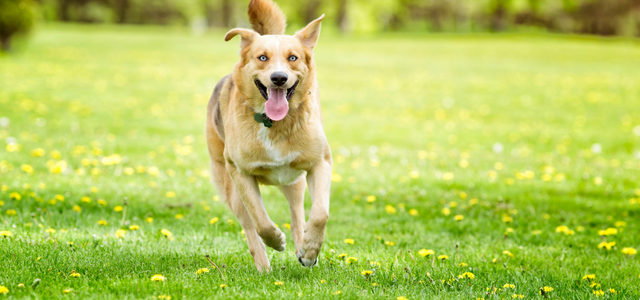
Exercise is vital in the daily life of a dog.
Not only does regular exercise ensure your dog maintains a healthy weight but it can also provide them with a host of additional physical and mental benefits, such as:
Boosted Happiness: One of the biggest benefits of regular exercise for dogs is that it boosts their feelings of happiness. Engaging with your dog in stimulating exercise can help raise their serotonin and dopamine levels, which improves your dog’s mood and makes them feel happy.
Stable Energy Levels: When training a dog, it is crucial to first lower their energy level before trying to teach them a new lesson. The key is to exercise your dog well before starting training, allowing them to spend any cooped-up energy from being inside for long periods. As a result, you can more easily keep their attention during training when their energy level is stabilized.
Disease & Injury Prevention: Overweight dogs are more at risk of developing health-related conditions and sustaining injuries. Regular exercise helps keep your dog’s body functioning properly, as well as builds muscle that fortifies your dog’s limbs and body against any physical strain that could lead to an injury.
Fewer Behavioral Problems: The reality of owning a dog is that they are bound to get bored of sitting inside. If a dog goes too long without stimulation from exercise, they are likely to begin expressing their frustration through bad behavior, like destroying furniture or peeing in the house. Comparatively, regular exercise helps reduce your dog’s overall behavioral problems.
Now that we have covered the key benefits of regular exercise for dogs, let’s discuss how much exercise your dog needs. In general, a dog’s ideal amount of exercise is determined by their age and health. Breed and size also play a major role, with bigger and more genetically active dogs needing more daily exercise.
With this in mind, here is how much exercise is needed for puppies, adult dogs, and senior dogs.
Exercise for Puppies
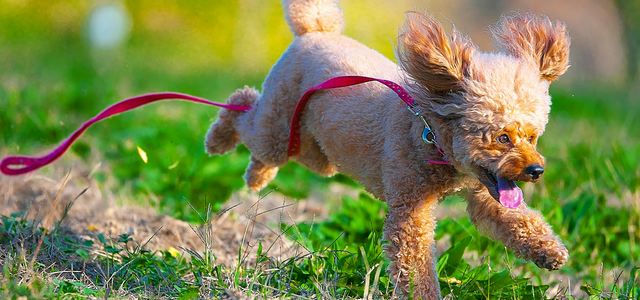
Puppies have a lot of energy and, thus, need a lot of exercise — but not in the way you may think.
The key here is to define what “a lot of exercise” means in the context of puppies.
According to the American Kennel Club (AKC), too much exercise in puppies can lead to joint and bone problems, especially in large-breed dogs. For puppies younger than 6 months, even super short walks can tire them out and make them ready for a nap.
So, when we say your puppy needs a lot of exercise, we mean a lot of exercise by the puppy’s standards.
While you and your adult dogs may be able to walk one mile with no problem, your puppy may only be ready for a fraction of that distance — they’re still a baby, after all!
Since puppies take time to leash-train and build up stamina for longer walks, your puppy exercises should mainly consist of playing with toys and doing very basic training or agility sessions.
What’s most important is the frequency of activity. Puppies can play with high energy for around 30 minutes at a time before crashing. Taking the time to engage with your puppy, which is great for puppy training, during these times is the best way to make the most out of that energy and turn it into something positive.
Plus, when you’re ready to begin formally training your puppy around 6 months, having a regular routine of playtime can help you schedule ideally-time training sessions.
Exercise for Adult Dogs
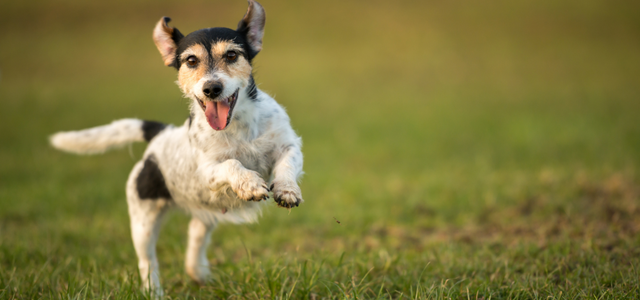
As mentioned, the ideal amount of exercise for an adult dog is dependent on its size and breed.
All dogs should go on at least two to three exercise walks per day, with extra potty breaks added in as needed. Depending on the size and breed, these exercise walks can vary in length and distance.
Small dogs, like chihuahuas and small terriers, only really need around 30 minutes to an hour of moderate exercise per day. By comparison, large dogs can need between 1 to 3 hours of rigorous exercise daily to maintain their physical stamina and figure.
Moreover, certain dog breeds are genetically inclined to want more mental stimulation, such as Border Collies, German Shepherds, and Belgian Malinois. These types of dogs need not just several hours of exercise but also 1 to 2 hours of mental stimulation as well.
If you’re clever about it, you can work that mental stimulation into your regular exercise hours.
Exercise for Senior Dogs
When your dog reaches the age of 8 or older, they are likely to begin showing bigger signs of aging.
Among other things, this can include less overall energy and stamina throughout the day. In turn, your dog may not be up for as rigorous exercise or as long of walks as before.
Regardless of their age, you should still aim to reach 30 minutes to 1 hour of moderate exercise with your senior dog. The key is to keep an eye on their body language and watch for signs of physical exhaustion.
If your dog has reached a point where their mobility is severely limited, consult with your veterinarian on the next best steps for keeping them comfortable and healthy for the remainder of their life.
Tips & Best Practices for Exercising Your Dog (Both Indoors & Outdoors!)
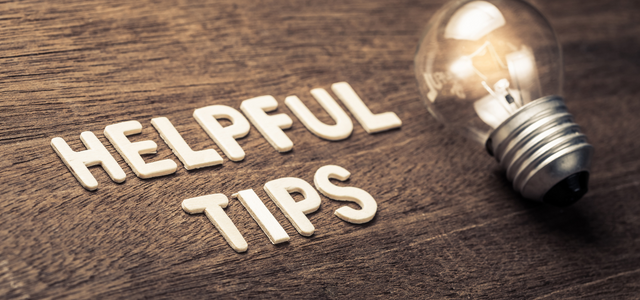
Whether you have a spacious yard for your dog to run around in or an indoor-only home with no outdoor space, you can adequately exercise your dog with a little effort.
Outdoor exercise is almost always the superior option, as it allows your dog to experience the natural world and get used to encountering other living beings. If you do not have an outdoor space attached to your home, make sure you have a good nearby walking route or park to visit for your daily walks.
However, your indoor space can also serve as an excellent training ground with the right preparation.
Let’s now discuss the differences between indoor and outdoor exercise, as well as what types of exercises you can try out with your dog.
Indoor Exercise
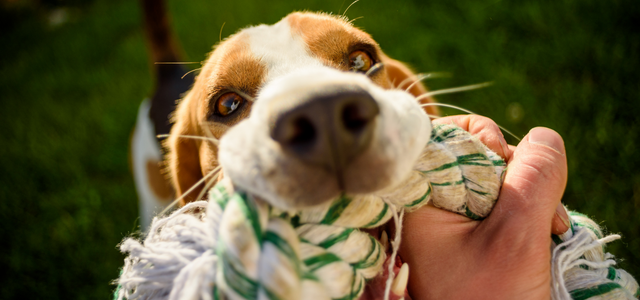
For the times when indoor exercise is your only option, fear not — there are plenty of good exercises you can have your dog practice within the confines of four walls.
First and foremost, let’s cover the equipment you will need:
Floor Cover: Dogs get rowdy when they play and their paws can often scuff up your flooring, regardless of whether it’s carpet, wood, or another material. Plus, dogs shed, and that hair can end up all over your floor when exercising. The best solution is to invest in a nice tarp, blanket, or another cover that can spread out across the indoor area where you plan to play.
Dog Toys: Since walking and running are not viable options indoors (without exercise machines — more on that in a moment), you will need an army of dog toys to keep your dog entertained during exercise time. This can include fun chews, plush toys, and squeaking toys. Chews are especially great for keeping your dog’s teeth healthy and clean as well.
Puzzle Games: Another type of dog toy you can use indoors is a puzzle game. Puzzle games involve simple puzzles designed for your dog to solve. After solving the puzzle, the game rewards your dog with a treat. While this is not inherently an exercise, it does provide mental stimulation that is a great addition to exercise, especially indoors.
Treats: Treats are crucial for rewarding your dog for good behavior while exercising indoors. You can use the treats as positive reinforcement when your dog does something good, such as following a command you give them, and withhold the treats when your dog behaves badly. This can even add a training element to your indoor exercise session!
Exercise Machines: For some owners with high-energy, big-breed dogs that need hours of rigorous exercise, an exercise machine may be a good option. These machines are often designed like treadmills and other human equipment but are tailored to be used by dogs. While this can be a fantastic way to get your dog rigorous exercise indoors, exercise machines can be expensive and require constant supervision while in use.
Once you have all the right equipment for indoor exercise, follow these three key steps:
1. Prepare Your Home for Playtime: Get your floor cover ready and move any furniture or objects out of the way of your indoor exercise space. This is a good opportunity to train your dog to respect boundaries by teaching them to stay within the bounds of the cover.
2. Focus on Your Dog: When exercising a dog indoors, keep your full attention on them. This helps your dog to feel more engaged in the activity, as it becomes a social affair for them to enjoy while they work out their energy. It also gives you the chance to correct bad behavior as it occurs.
3. Time Your Exercise Sessions: As mentioned earlier, you don’t want to over-exercise your dog and increase the risk of injury or health issues. As such, you should time your exercise sessions to make sure you are hitting the sweet spot of effective exercise time. We suggest between 30 minutes to an hour for indoor exercise sessions, depending on your dog’s breed and size.
Outdoor Exercise
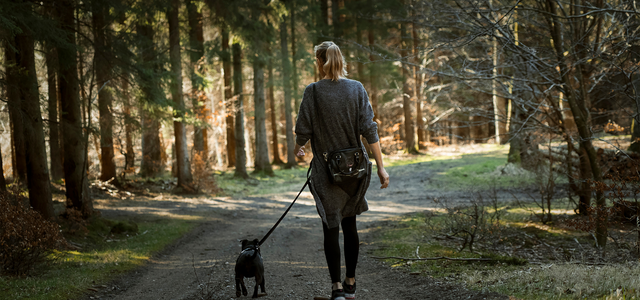
Ah, the great outdoors — where dogs can roam and play!
The outdoors is always a preferable option for exercising your dog, as there are many sights, sounds, and smells for them to experience along the way. Just the natural and social settings you can find outdoors alone can provide your pup with excellent mental stimulation while exercising.
When planning an outdoor exercise session for your dog, make sure you have the following gear:
· Collar: A collar is similar to a wallet that a person may carry — it contains all the dog’s identifying information, like the dog’s name and owner’s contact information. However, the collar should not be used as the attach point for the leash during exercise, as this can lead to strain on the dog’s neck and even injury if the dog pulls or jerks around too hard.
· Harness: Rather than using a collar as an attach point for a leash, use a harness instead. A quality harness takes the strain off your dog’s neck and spreads it more evenly across their whole body. Plus, a harness gives you better overall control of your dog as well.
· Leash: With your collar and harness taken care of, it’s time to attach the leash. The style of leash you use depends on your personal preferences and the strength of your dog. We recommend a flat leash or rope leash for added sturdiness and strength while holding onto your dog.
· Treats: Just like with indoor exercise, you should have treats on hand to reward your dog with. When your dog behaves badly, withhold the treats to communicate to them which behaviors you want them to stop and which ones you want to continue. You may also want a small bag to put your treats in that can easily fit in a pocket or backpack.
· Poop Bags: Your dog is bound to use the potty once or twice while out and about, so make sure you have poop bags to pick up after them with. On this note, try choosing an outdoor location that has public trash cans available. Some public parks even provide you with free poop bags!
· Water: If you plan on being outdoors for a long time, make sure you bring water and a bowl to keep your dog hydrated. Many pet stores carry collapsable dog bowls that are easy to store and carry in a bag or purse, making it easier to bring a bowl along on an outdoor adventure.
With your gear ready to go, it’s time to decide what type of outdoor activity you want to do with your dog. While there are many different types, we can sort most into one of two categories — on-leash exercise and off-leash exercise.
As the names suggest, on-leash exercise is when you are exercising with your dog attached to the leash, while off-leash exercise allows your dog to experience greater freedom.
Unless you have a private backyard or a nearby park that allows dogs to be off-leash, it is always best to keep your dog on a leash when outdoors and away from home. Remember that while your dog may be friendly, others may not be — the leash helps ensure everyone stays safe!
The other main place where your dog can be off-leash is at a public dog park. If you choose to visit a dog park, just keep your wits about you and be prepared to correct your dog’s behavior as they socialize with the other people and dogs visiting.
Though you may enjoy running with your dog, chances are that your dog likes running exponentially more than you. Finding a safe place for off-leash outdoor activities can be great for getting your dog even more exercise without having to spend equal amounts of energy yourself.
Here are four great activities for exercising a dog outdoors:
· Tug-of-War: Tug-of-war is one of the most straightforward games to play with your dog. All you need is a two-sided rope toy and two hands to pull it with. Get your dog to grab onto the other side with their mouth and tug away.
· Agility Training: Agility training is great for increasing your dog’s mobility, strength, speed, and more. While outdoors, set up an obstacle course using either agility training gear purchased from a pet store or household items repurposed as obstacles (such as rope).
· Hands-Free Biking or Running: If you want to exercise with your dog, get a hands-free attachment that allows you to hook your dog up to either your waist or onto your bike. By doing so, you can run or bike alongside them without having to hold onto a leash.
· Fetch with Tennis Ball Launcher: For outdoor areas that permit off-leash playtime, there’s no better or more classic game than fetch. To take things up a notch and really get your dog running, use a tennis ball launcher to throw those balls far away for your dog to retrieve.
Plan for Success: Scheduling Exercise into Your Daily Routine
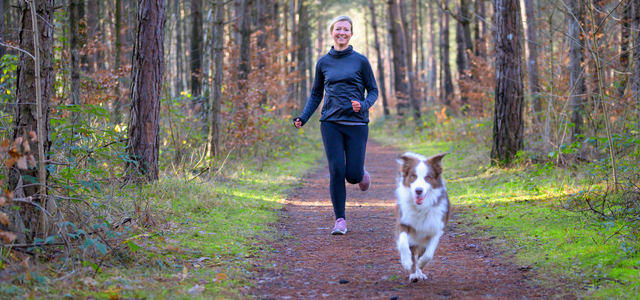
We have covered everything you need to know about how often your dog needs exercise and what types of exercise you can practice — but how about creating a schedule you can stick to?
Keeping your dog in excellent shape comes down to having a strong and reliable routine.
Where many dog owners go wrong is trying to create a new exercise and training routine that is too elaborate and deviates greatly from their normal daily schedule. For example, if you do not wake up early but try to begin waking up 3 hours earlier for an exercise session, you are more likely to fail than someone who schedules exercise sessions into existing free time.
With this in mind, here are 5 key steps for crafting a realistic exercise plan that meets your dog’s needs:
1. Establish Your Personal Schedule: Before you can begin scheduling in exercise times for your dog, you need to know what your daily schedule looks like. If you do not currently keep a schedule or calendar up to date, start now — this will help you significantly during planning.
2. Block Out All Potential Exercise Times: Once you have a clear schedule of your personal daily routine, block out and mark all the potential times you have throughout the day and week for exercising your dog. You don’t need to use all of the times you find but knowing what options you have is key to building a schedule you can stick to.
3. Mark Your Current Walk Times: If you currently dedicate specific times for walks, mark these on your schedule. These times can be a good foundation and jumping-off point for going on longer or more rigorous walks that help contribute to your dog’s total exercise time.
4. Identify Who is Responsible for Exercising the Dog: For households with more than one owner, it is critical to identify who is responsible for exercising the dog. If it is a shared responsibility, you must decide who will exercise the dog on which days and at what times.
5. Get Your Kids, Family, or Roommates Involved: For dog owners with kids, family members, or roommates living with them, getting these people involved can be a great help. Depending on the level of willingness your kids, family, or roommates have to help, you can delegate exercise or caretaking tasks to them to free up more time in your schedule.
Do You Need to Hire a Professional Dog Walker?
Sometimes we all bite off a little more than we can chew when it comes to exercising a dog — especially those of us who opt for big and active breeds!
Luckily, help is out there for those who want it.
If you are feeling overwhelmed in your quest to better exercise and train your dog, it may be time to get in touch with a professional dog walker.
Professional dog walkers are great for many reasons, including:
· Supervised Socialization: Many professional dog walkers walk multiple dogs at once, giving your dog the chance to socialize with other dogs under professional supervision. Likewise, a dog walker is likely to encounter other people and animals while out on a walk, which offers the same opportunity for professionally-supervised socialization.
· Dog Training Expertise: If you choose a professional dog walker that specializes in training, your dog can learn some valuable lessons during each walk. For example, a dog walker with training abilities can help correct your dog’s behavior on a leash, making it easier for you to control your dog during outdoor exercise later on.
· Schedule Flexibility: Professional dog walkers tend to have great scheduling flexibility, enabling you to choose the times that work best for you and your dog’s current routine. Plus, this frees up more time in your schedule to dedicate to other tasks or even just time for relaxation.
Final Thoughts: An Active Dog is a Happy Dog
Active, well-exercised dogs are living their best lives — and your dog can, too.
An active dog is a happy dog, and a happy dog is far easier to train than a frustrated one. Ensuring your dog gets the daily exercise they need is the critical key to making training a breeze.
As a final takeaway, we leave you with the reminder that your dog relies on you for everything. Establishing a lasting exercise schedule and sticking to your training routine depends just as much on your dedication as it does on your dog’s good behavior.